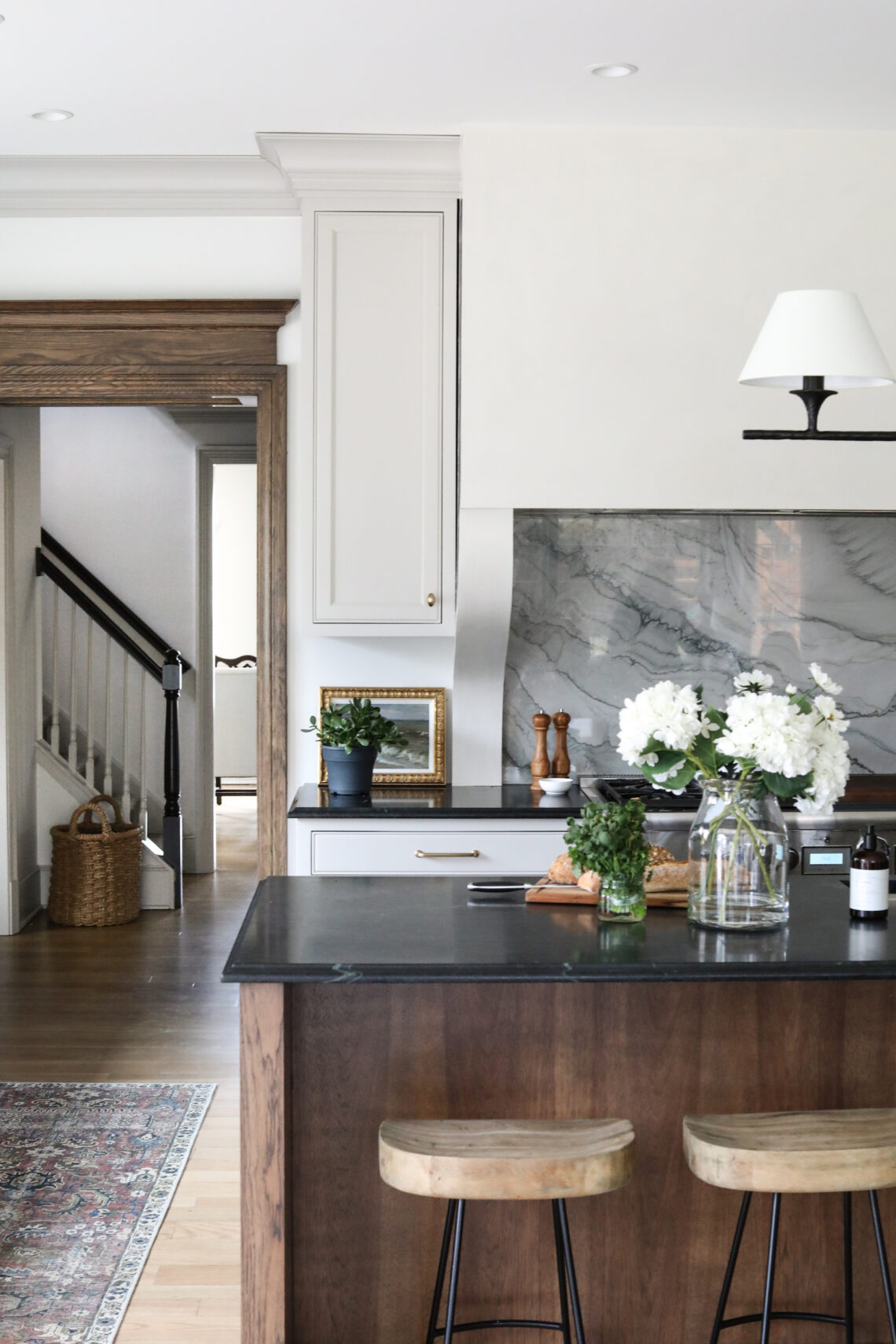We get a lot of questions about how we decide which wood species and stains to use in a space, and how to ensure that everything will add up to a cohesive look. While every project and every room is different, we have a few rules of thumb to share that will help you on your way.
Mix it up!
Much like our approach toward contrasting metals (go for it!), we always try to use a variety of wood species and stain tones in each individual space. When everything matches, it’s difficult for the eye to know where to land, and all your woods start to blend together. When you introduce different tones in same space you create a layered effect, and the eye can rest for a bit on each piece and take a moment to really appreciate each individual element as part of a cohesive whole.
The bones of the #POglenviewreno home below included beautifully detailed trim and casework that we highlighted with a darker stain to contrast the lighter white oak floors. The hickory island is a foil for both.
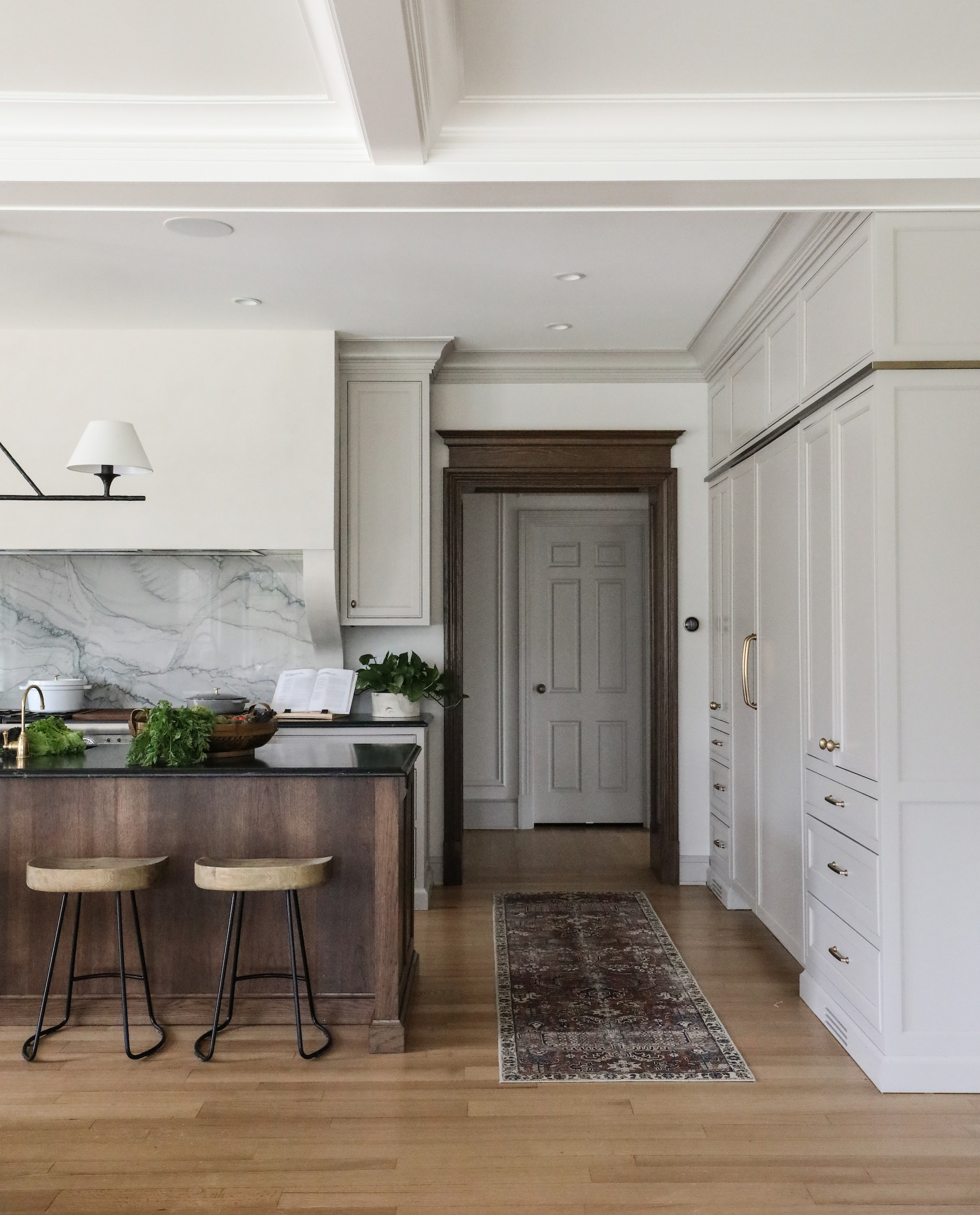
White oak floors, a warm wood ceiling and a burl desk all work together in perfect harmony in the #POhinsdalenewbuild office.
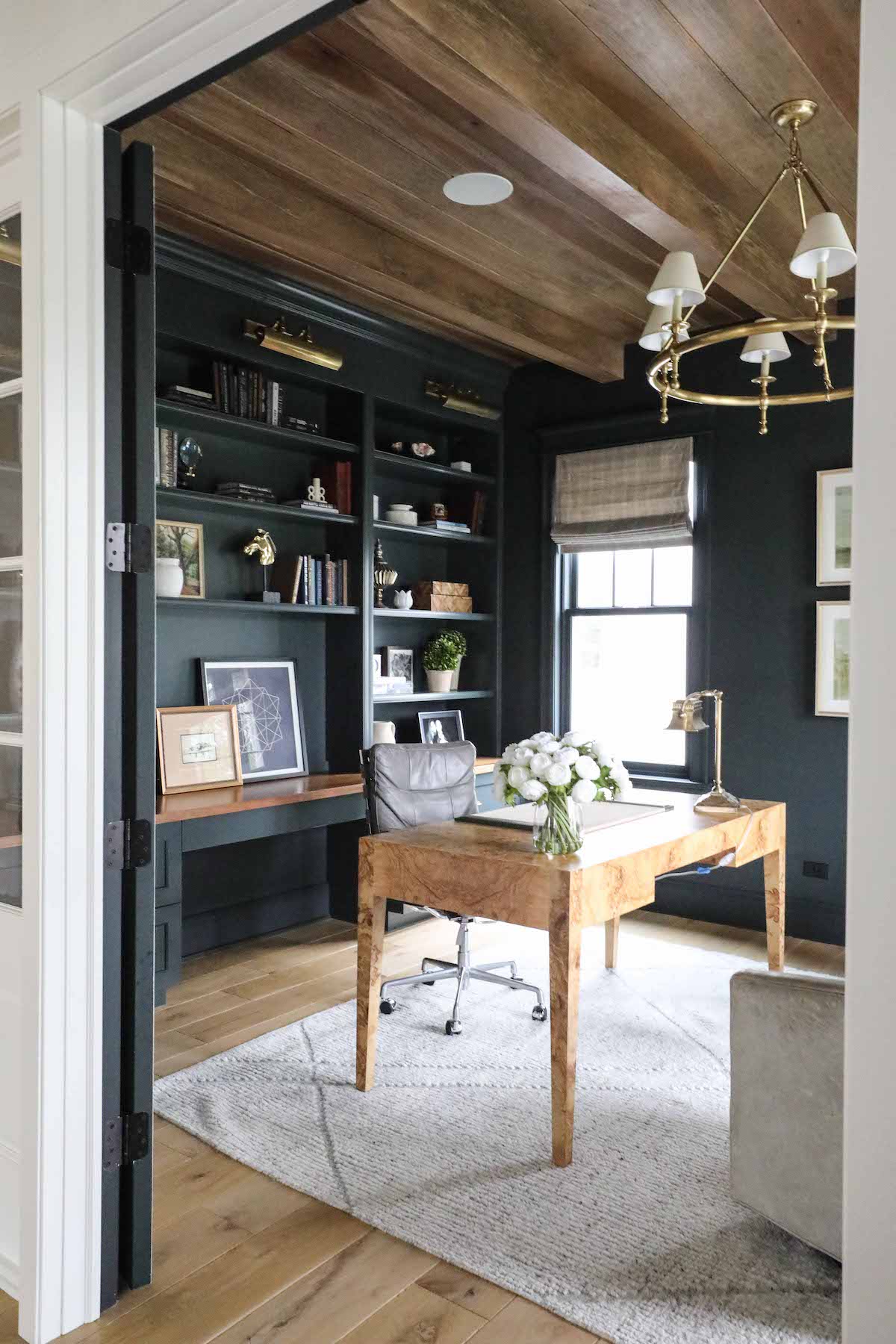
The original trim at #POlagrangehome is peeking out from the background. Working around that trim was important, so the island and floors were chosen to provide contrast.

Know where to start.
In room that may have a large number of different wood tones, knowing where to start is key. In a remodel, we suggest starting with your floors. Often, you won’t be replacing those throughout an entire home, so you need to work with what’s there. Re-staining is always an option, but you’ll want to choose that stain first — and know how it behaves with the species you are staining — before you move on to other considerations. Be sure when selection stain for floors that you see it in your home in different light. Once you’ve chosen your floor stain, bring a sample with you when you go choose any other elements.
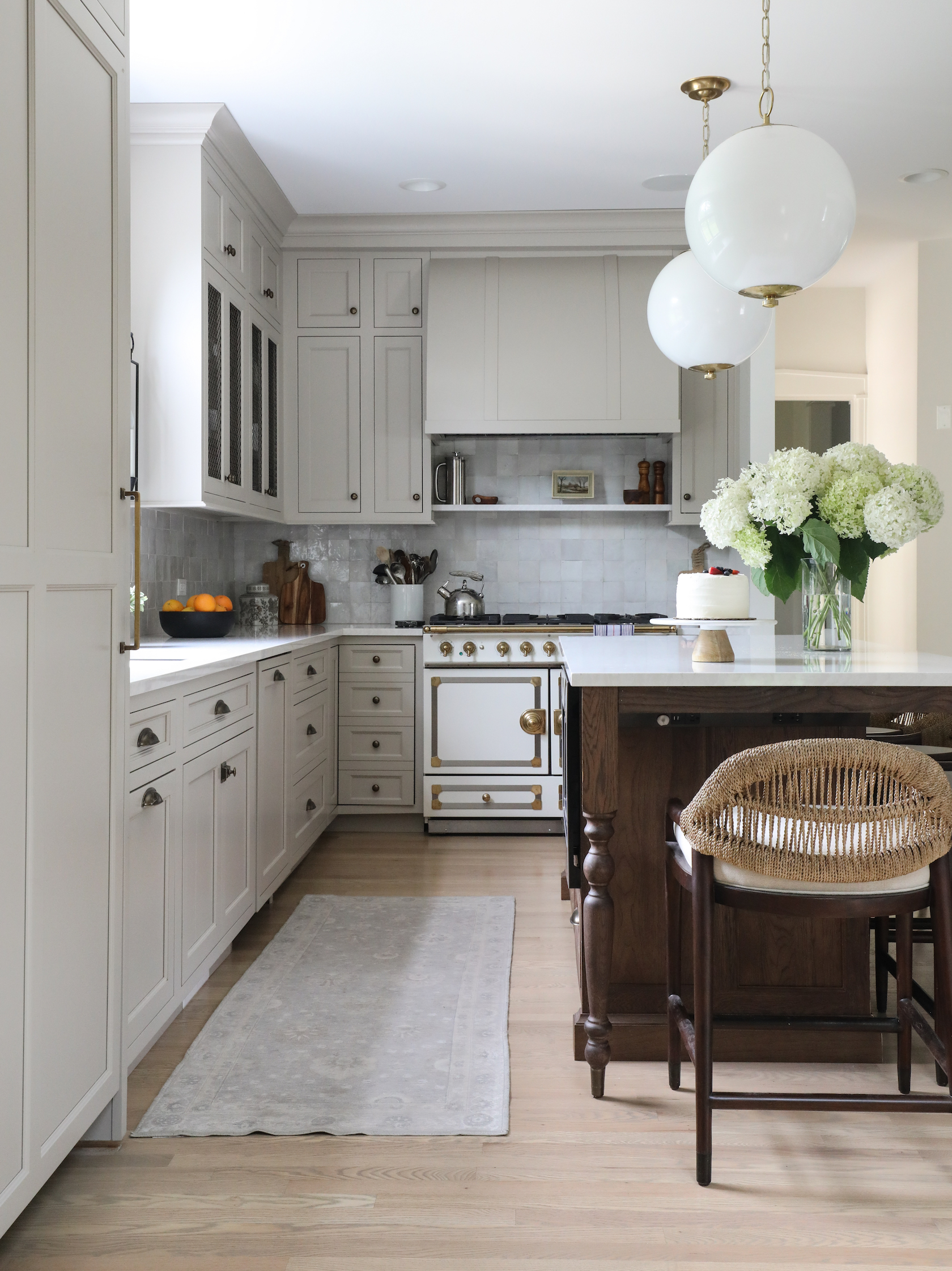
In a new build, we suggest starting with the kitchen island. This is a big impact point in any home, as kitchens have become a central feature of modern living. An island can also be built from a variety of wood species — hickory, walnut, ash, cherry, oak — while new build floors are nearly always oak. Once your island has been designed, you can choose a custom stain that plays well with that particular wood species and that you will love as a prominent feature of your home. Floor stain can come next, and then any additional wood elements later.
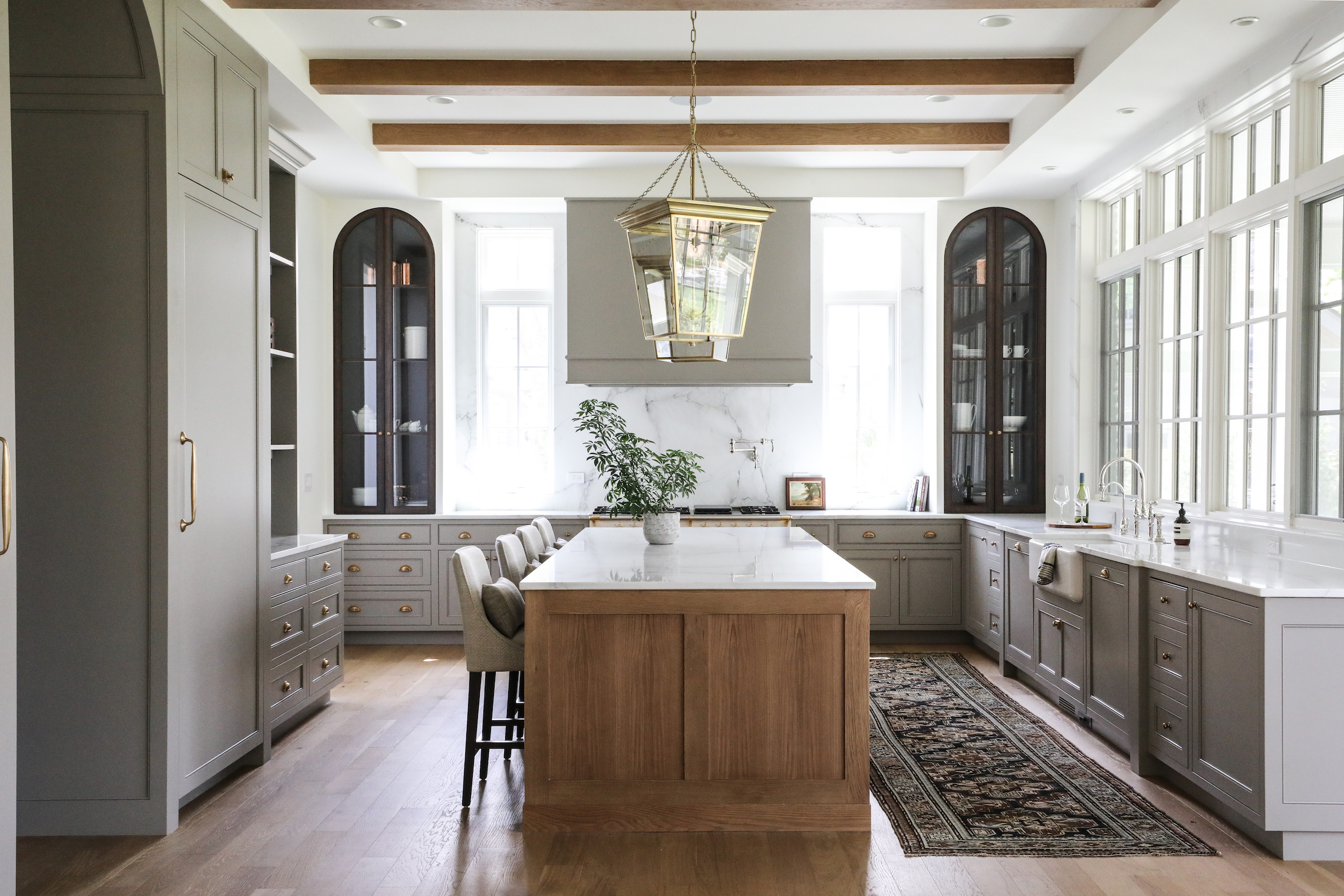
Think high contrast.
Contrast is your friend, especially for wood elements that touch each other, such as a floor and kitchen island, as in many of the examples above, or floor and fireplace, as below in the #POgrovenewbuild. Contrast helps the choices look purposeful, and lends the layered look that helps a home feel cozy and lived in.
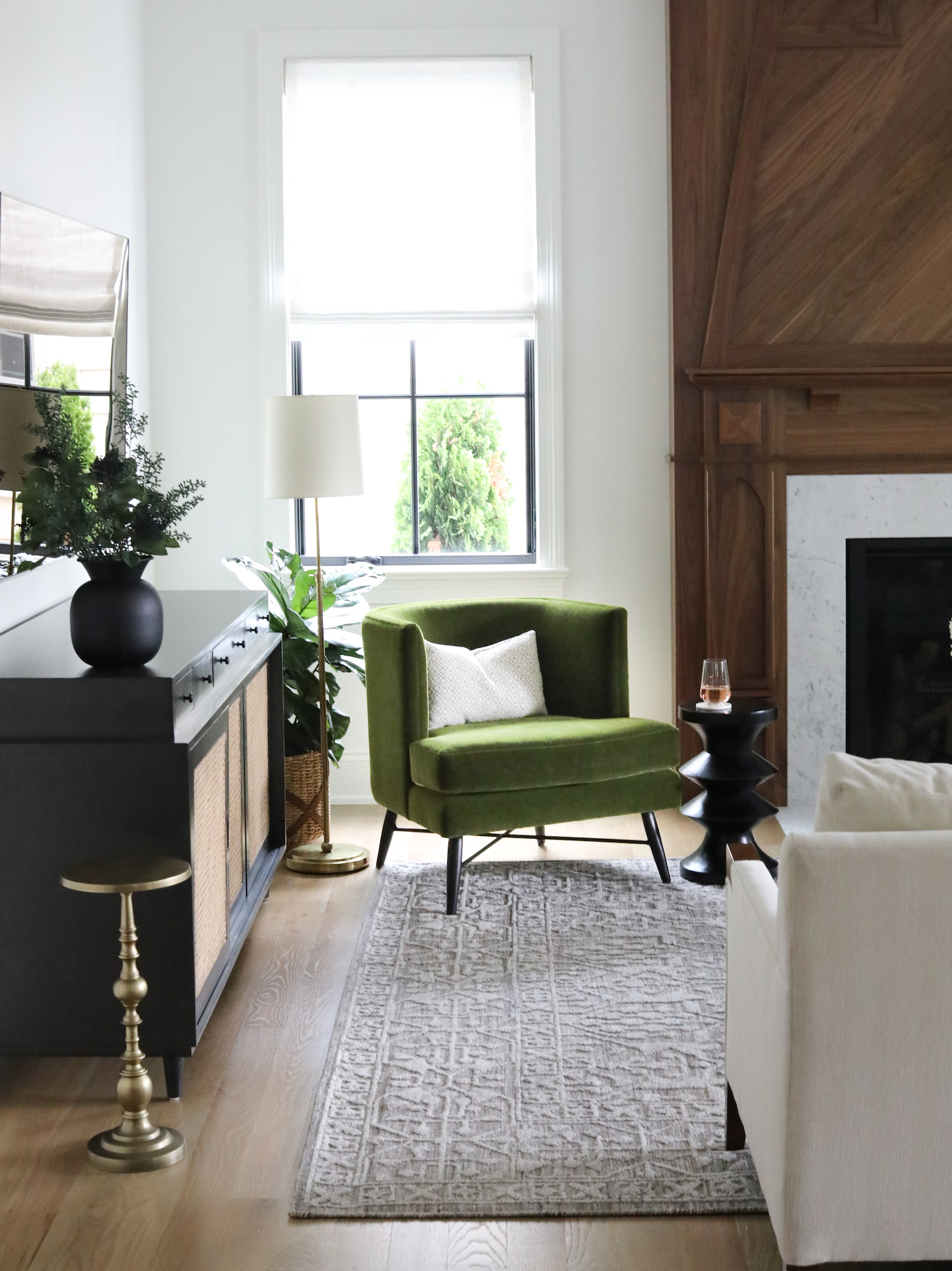
Staining the interior of a built-in or bookcase is a great way to highlight the pieces held there, and provide the kind of contrast that makes wood elements interesting. #POglenellynstudy
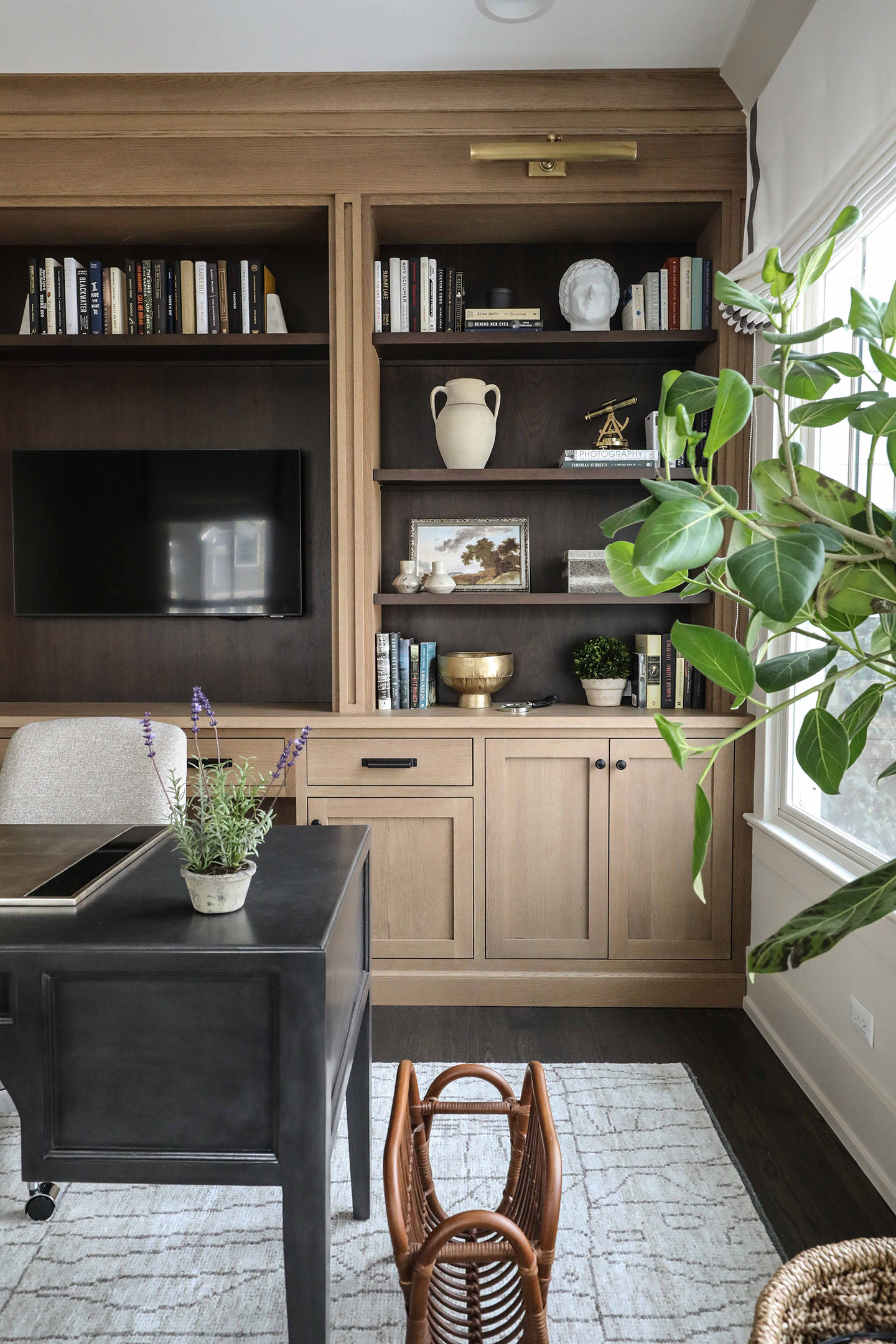
Working with beautiful original wood details that would be difficult to re-stain? A rug can help break up wood elements that are too similar, as below in the #POsouthbendlawoffice.

A final thought on contrasting wood tones: often homeowners steer away from mixing wood tones and wood species out of a desire for perfection. But, if everything matches just so, you can wind up feeling like you are living in the pages of a magazine rather than a real home. We are here to say: embrace imperfection. Mix those woods. You won’t be sorry.

